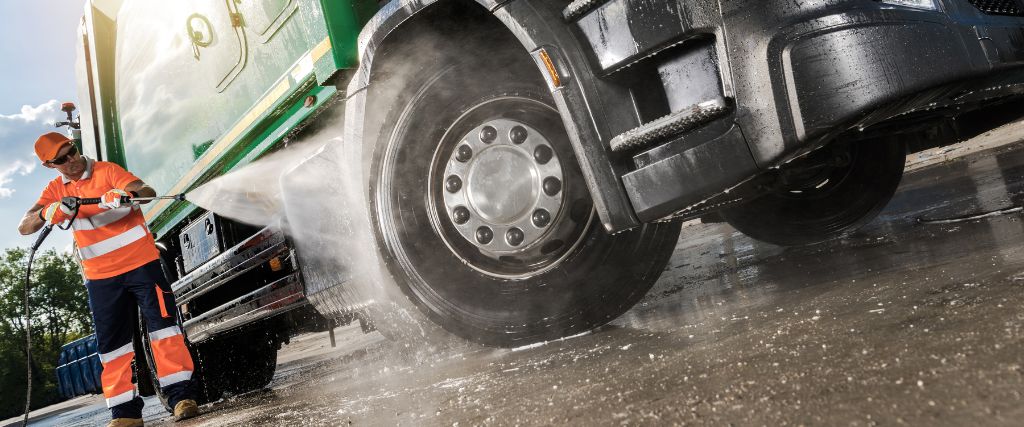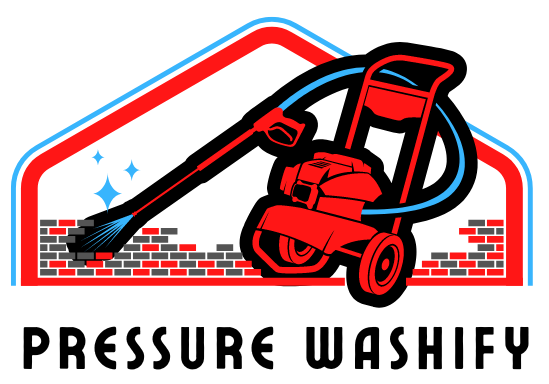Affiliate Disclaimer: This post may contain affiliate links, meaning we get a commission if you decide to make a purchase through our links, at no extra cost to you.
Imagine this: a driveway that’s piled up with dirt, a grimy sidewalk, or a stained patio that’s turning an unpleasant shade of brown. We’ve all been there, haven’t we? Trust me, getting rid of these grimaces isn’t as hard as it seems, especially when you have the right tool: a pressure washer with a water tank.
Pressure washers with water tanks are real game-changers in the world of outdoor cleaning. They are powerful, efficient, and portable. With their built-in water tanks, you can clean anywhere, anytime, without needing a constant water supply. Whether it’s for your home, your business, or your outdoor adventures, having a reliable pressure washer with a water tank by your side can take your cleaning to a whole new level.
But, choosing the right pressure washer with a water tank isn’t as simple as picking the first one you see. It’s crucial to find a model that suits your specific needs, and that’s exactly what we’re here to help with today.
Top Pressure Washer with Water Tank Models
Navigating the market for pressure washers with water tanks can be like finding a needle in a haystack. But fear not, because we’ve done the heavy lifting for you!
Sun Joe SPX6000C-XR iON Max
The Sun Joe SPX6000C-XR iON Max is a versatile jack of all trades. Armed with a powerful 40V/600-Watt motor, it’s ready to tackle a variety of cleaning tasks for homes, RVs, boats, decks, and more. Thanks to its compact design with rear wheels and an integrated carry handle, moving around with this pressure washer is a breeze.
The 5.3-gallon water tank, however, might need refilling should you take on extensive cleaning projects.
Highlights:
- 40V/600-Watt motor for efficient cleaning
- Powerful 1160 PSI Max pressure
- Rear wheels and integrated carry handle for easy mobility
- Compact for easy storage
- 5.3-gallon water tank


WORX WG644 40V Power Share Hydroshot
The WORX WG644 Power Share Hydroshot is an ideal choice if the environment is top of mind for you. This cordless and emissions-free model with dual 20V batteries reduces the environmental footprint while giving you the freedom to move around without any cords in the way. However it does not come with a bucket, instead you can use any bucket or even a pond or a lake as a water source for this pressure washer.
It offers a moderate but effective 450 PSI for regular cleaning tasks. It’s also lightweight at just 6.9 lbs. Do keep in mind, though, that for larger cleaning tasks, you’ll need to have extra batteries charged and ready to go.
Highlights:
- Dual 20V batteries for greener cleaning
- Does not come with a water tank or bucket
- Offers cordless freedom and reduces emissions
- 450 PSI, suitable for regular tasks
- Lightweight and portable
- May need extra batteries for extended use


Greenworks 40V Cordless Pressure Washer 4Ah USB
The Greenworks 40V Cordless Pressure Washer offers a cordless cleaning experience with a detachable water tank, making it convenient for various cleaning tasks. This pressure washer runs on a 40V battery and delivers power up to 800 PSI, ensuring superior performance for small to medium-sized cleaning projects.
It comes with a 20-ft hose, making it easy to reach different areas without hassle. However, the battery and charger need to be purchased separately if you don’t already own compatible Greenworks equipment.
Highlights:
- 800 PSI for a powerful cleaning experience
- 5-gallon bucket capacity
- Cordless with a 40V battery (not included)
- Detachable water tank for easy filling and cleaning
- 20-ft hose for better reach (can be ordered with longer lengths)
Factors to Consider When Choosing a Pressure Washer with Water Tank
Selecting the best pressure washer with a water tank involves more than just comparing models. You’ll need to consider several factors to ensure you choose a washer that meets your unique needs and preferences.
We’ve listed some essential aspects you should keep in mind while making your decision.
Tank Capacity
The tank capacity of your pressure washer impacts how often you’ll need to refill it during use. A larger tank allows for more extended cleaning sessions without frequent stops to top up.
Smaller tanks, on the other hand, are best suited for quick, small-scale cleaning tasks. Consider the nature and duration of your cleaning projects when choosing a water tank size.
Pressure and Flow Rate
Pressure and flow rate are critical factors in determining how powerful and efficient your pressure washer will be. High pressure and flow rates are best for tackling tough dirt and grime on large surfaces, while moderate pressure levels are more suited for basic cleaning tasks.
Keep in mind your specific cleaning requirements when selecting a model with the appropriate pressure and flow rate.
Mobility and Size
A portable pressure washer with a water tank is crucial if you plan to use it in different locations or need to move it around frequently. Compact designs with wheels or carrying handles greatly enhance mobility.
Analyze your cleaning needs to gauge how much a pressure washer’s mobility will impact your experience and choose accordingly.
Power Source
Pressure washers with water tanks can be powered by electricity, gas, or batteries. Electric models produce less noise and require minimal maintenance but need a power outlet nearby. Gas-powered models offer higher pressure and flow rates but can be noisy and less eco-friendly.
Battery-operated models provide cordless freedom but may require extra batteries for long cleaning sessions. Consider the pros and cons of each power source based on your cleaning environment and preferences.
Price and Value for Money
Lastly, think about your budget and whether the pressure washer with a water tank you choose offers value for money. Higher-priced models typically have more features and power, but may not be necessary for your specific needs.
Look for a model that strikes a balance between cost, performance, and features that suit your requirements.
How to Set Up and Use a Pressure Washer with Water Tank
Here’s a simple step-by-step guide to getting your pressure washer ready for action and tips for using it safely and efficiently.
Step-by-Step Guide on Setting Up
- Get Familiar with Your Unit: Start by reading your pressure washer’s user manual. Familiarize yourself with all its components, controls, and safety warnings.
- Assemble the Unit: Next, assemble your pressure washer. This typically involves attaching the hose to the machine and connecting the wand to the hose.
- Prep the Water Tank: Rinse out your water tank to eliminate any debris before filling it up.
- Fill up the Tank: Depending on the model, you may either fill the tank using a hose or remove it from the unit to fill it.
- Add Detergent (If Applicable): If your model allows, fill up the detergent tank with a pressure-washer-safe cleaning solution.
- Power Up: Plugin (or start the engine for non-electric models) and power up your pressure washer.
- Adjust Settings: Tailor the pressure level and spray pattern as needed for your cleaning task using the settings on your unit.
Tips for Using Your Pressure Washer Safely and Efficiently
- Use Appropriate Pressure: Excessive pressure can damage surfaces or your pressure washer. Always start with the least aggressive setting, then adjust as necessary.
- Proper Handling: Hold the pressure washer at a safe distance from the surface to be cleaned to avoid damage. A narrow jet provides forceful impact, while a wider spray is gentler.
- Safety Gear: Wear protective eyewear and gloves when using your pressure washer. Avoid using it barefoot or in open-toed shoes.
- Nozzle Cleaning: If you need to clean the nozzle, make sure the pressure washer is switched off to avoid injury.
- Environmentally Friendly: Be mindful of what you’re washing and where the runoff is going, particularly when using cleaning solutions.
- Stay on Maintenance: Regularly inspect and maintain your pressure washer to keep it running optimally. Check for tight connections, proper water supply, and clean filters.
- Storage: After use, disconnect all water supplies and turn off the system. Drain excess water from the machine and store it in a cool, dry place.

Final Thoughts
Choosing a pressure washer with a water tank may seem like a daunting task, but it doesn’t have to be. By putting a bit of time into understanding your needs, comparing models, and checking off your priorities, you can find the perfect cleaning companion for you.
Remember, a pressure washer’s performance should align with your cleaning needs.
If you need a washer for occasional home use, a model like the Greenworks 40V Cordless Pressure Washer may make sense. On the other hand, if you’re tackling tougher projects, you may opt for a heavy-duty model like the Sun Joe SPX6000C-XR iON Max.
Whether you’re prioritizing environmental friendliness, portability, or powerful performance, there’s a pressure washer model out there for you. And remember, the best pressure washer is not always the one with the highest price tag or most features. Instead, it’s the one that best suits your individual needs and gives you the most value for your investment.
Frequently Asked Questions (FAQs) about Pressure Washers with Water Tanks
1. How important is the water tank capacity in a pressure washer?
Water tank capacity determines the amount of water your pressure washer can hold at a time. Larger tanks allow longer periods of cleaning without needing to refill, whereas smaller tanks might require frequent refilling. The importance of tank capacity would depend largely on your cleaning needs and the duration of your tasks.
2. Can I add detergents to the water tank of my pressure washer?
Typically, pressure washers have separate detergent tanks or dispensing systems to prevent damaging the pump assembly. You should always refer to the user manual to know how your specific model handles detergents.
3. How do I clean the water tank in my pressure washer?
Cleaning instructions can vary by model, and you should consult your user manual. Generally, though, you can clean the water tank with a solution of water and a mild bottle brush, rinse thoroughly, and dry before storing.
4. Will my pressure washer work without a water tank?
Yes, many pressure washers can operate using a standard garden hose connection as the water supply. However, having an integrated water tank allows for portability and is useful for cleaning tasks where a water source isn’t readily available.
5. Does a pressure washer with a water tank use more water than one without a tank?
No, having a water tank doesn’t necessarily increase water usage. The amount of water used typically depends on the washer’s flow rate (GPM), not whether it has a tank. In fact, pressure washers often use less water than traditional garden hoses while providing improved cleaning power.
6. If I run out of water in my tank, will the pressure washer still run or shut off?
Most pressure washers are equipped with safeguards and will shut off if they run out of water, preventing damage to the pump. Some models may allow the motor to run but will not blast water without a water supply. Always consult your owner’s manual for specific instructions.











